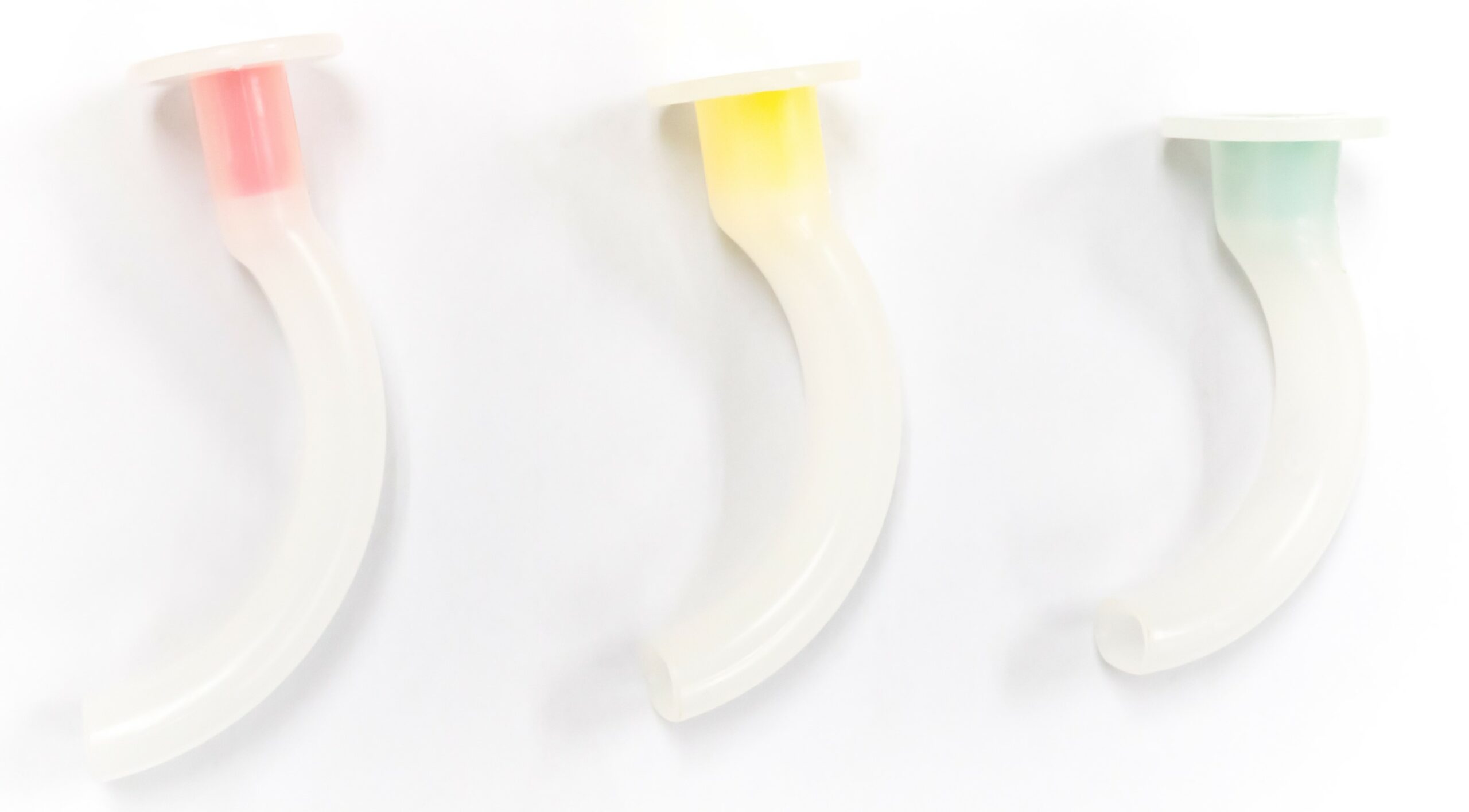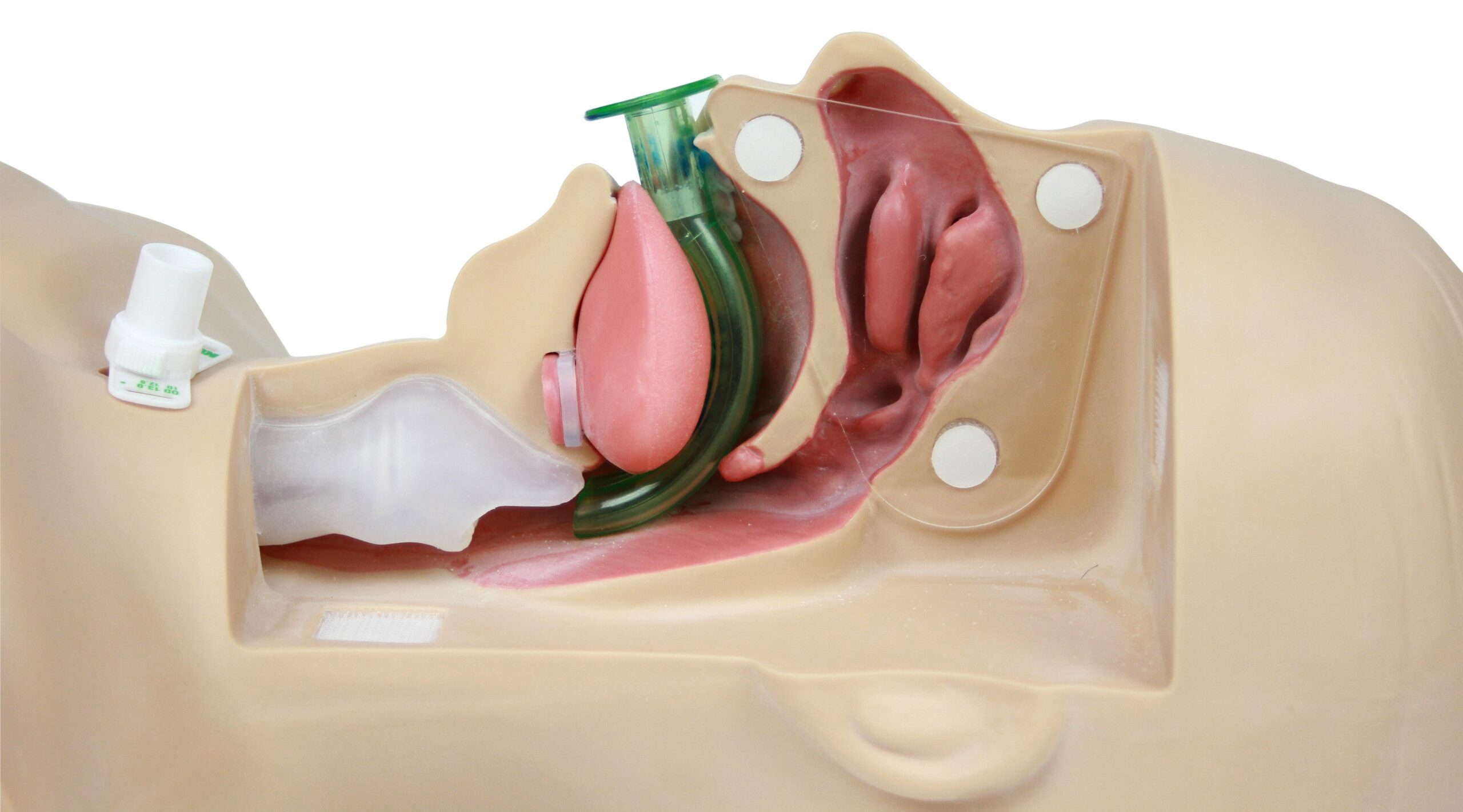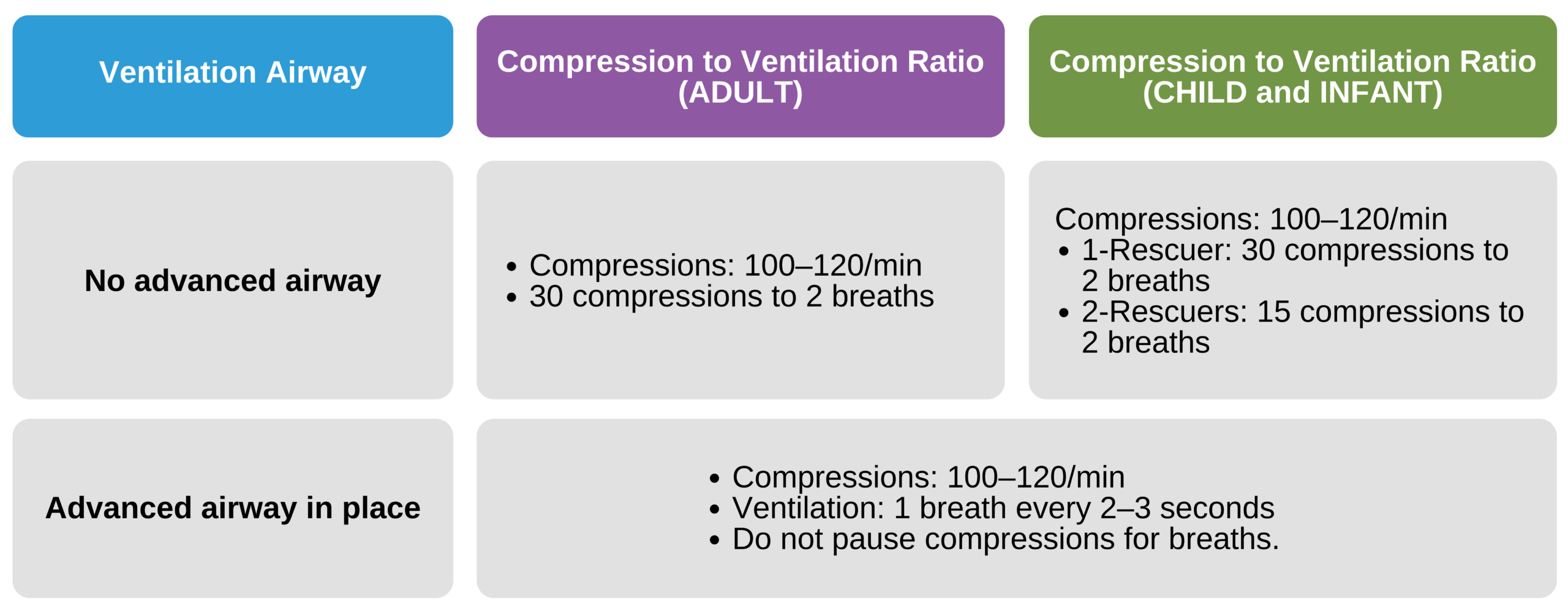Airway Adjuncts
Airway adjuncts are not typically available in an out-of-hospital cardiac arrest. If there is access to an airway, rescuers need to know how to use these adjuncts. The lay rescuer should not use airway adjuncts. When EMS arrives, they will have an array of devices available to use.
Oropharyngeal Airway
If noninvasive maneuvers cannot adequately open the airway, then airway adjuncts can be used.
An oropharyngeal airway is a rigid device that can stimulate coughing or the gag reflex. Therefore, an oral airway should only be used if the patient is unconscious and does not have a cough or gag reflex.

Oropharyngeal Airway Devices

Oropharyngeal Airway Device Insertion
An oral airway is generally used if the patient’s condition is only temporary, such as a patient recovering from sedation, a seizure, or cardiac arrest. An advanced airway, such as an ET tube, is used if providers are qualified to insert the tube and anticipate that the airway will be in place for a longer time.
In order to use an oral airway safely, the appropriate size must be determined. When measuring for the correct size, the oral airway is held along the side of the patient’s face with the flange at the corner of their mouth. The tip of the airway must reach the angle of the mandible. If available, a tongue depressor can be used to push the tongue to the floor of the mouth to avoid obstructing the airway with the tongue.
Nasopharyngeal Airway
The nasopharyngeal airway is made of a flexible material and can bypass an obstruction caused by the tongue and pharyngeal soft tissues with minimal contact with the tongue. It is less likely to stimulate a cough or gag reflex as compared with the oropharyngeal airway. The nasopharyngeal airway is useful in a patient with an intact gag reflex, and it is especially valuable for children with enlarged tonsils or a large tongue.

Nasopharyngeal Airway
The appropriate size is chosen based on the length of the nasopharyngeal airway rather than the bore. The proper size is determined by measuring the length from the nostril to the tragus of the ear. Another measurement that can be considered is the distance to the mandible.

Compression to Ventilation Ratio